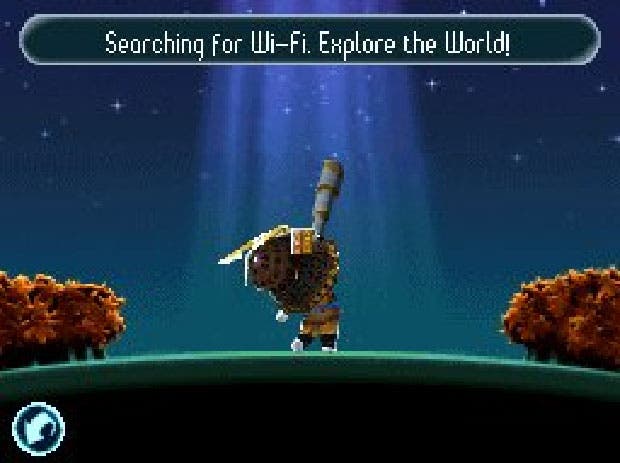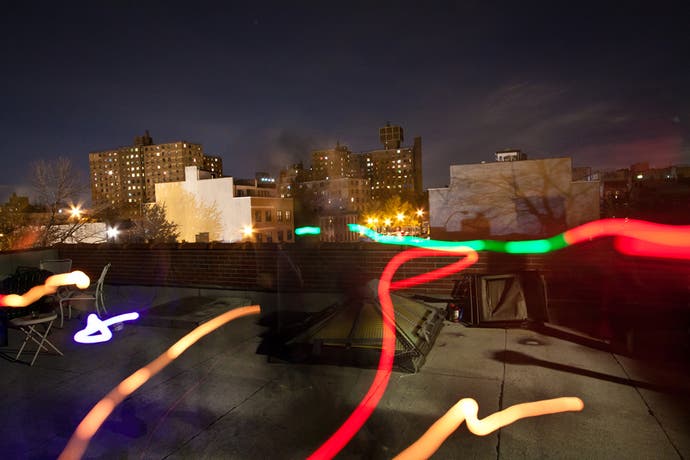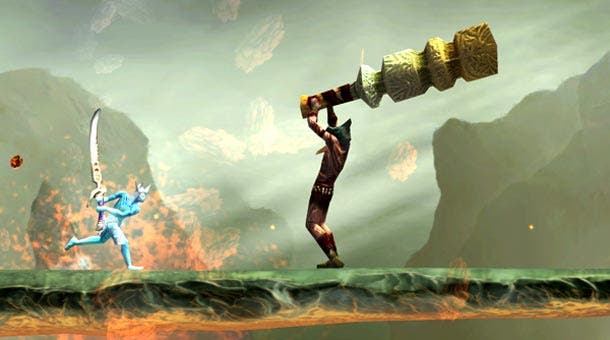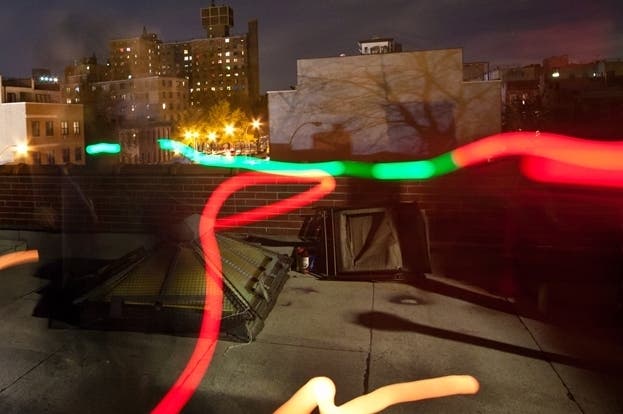Trends of 2013: The real meets the virtual
What happens when games and real-life start to exchange ideas?
Last November I moved house, which means I've found myself with a new neighborhood to explore, a new muddle of streets and parks and cul-de-sacs to learn the ins and outs of, a new racing line between the front door and the bus stop to uncover. I've taken to all of this the only way I know how, of course: I've stuck the Treasure World cartridge into my old DSi, I've snapped the lid shut, and I've been wandering around town looking for loot.
Treasure World isn't much of a game, but that doesn't matter quite as much as it should. It's a weird piece of lifestyle software, really, and it turns your DS into a celestial fishing rod. As you meander about, the cartridge is harvesting wi-fi hotspot signals - you get a cute little tinkling noise when it finds one and everything - and it then turns them into weird virtual doo-dads that you can sift through when you get home.
The virtual doo-dads aren't particularly good - they're the ludic equivalent of the kind of things you find in cheap Christmas crackers, if I'm being honest - but that doesn't affect my enjoyment of Treasure World as much as it should, either. I'm willing to overlook all the things the game gets wrong because I love the one thing it really gets right: it stitches threads between real and virtual worlds, and allows me to tangle myself in them.

Treasure World was released in 2009 and hardly made much of a splash: not a great start to a Trends of 2013 piece, perhaps. Over the last year or so, though, I've become increasingly aware of the ripples that the game - and others like it - seem to be making for me. There are more and more games these days that explore the fringe area that Treasure World patrols. They aren't necessarily poking around in wi-fi signals, but they're taking video game tech and ideas and bringing them into real spaces - and allowing games in real spaces to meddle with video game tech and ideas in return. As trend-spotting goes, this is hardly on the level of Kickstarter, and it's probably actually a series of loosely related trends rather than a single strain of thought. No matter: the games I tend to unconsciously place in this category are often interesting, pleasantly gimmicky and filled with potential to move beyond gimmicks. I'm excited to see more of them in the coming year.
When you talk about the blending of real and virtual spaces, it's hard not to start by thinking about augmented reality. AR's had a boom in the last year or so, for sure, whether it's UFO catchers and keep-me-up apps on smartphones, Wonder Book on the Christmas ad breaks, or Reality Fighters on the Vita and Face Raiders and The Denpa Men on the 3DS. AR's definitely a neat trick to pull out whenever you want to wow elderly parents with the lunatic edges of current hardware, perhaps, but as soon as the elderly parents have gone and the kids are up in bed, AR games seem to have a hard time of it. Are they offering a proper blend of the real and the virtual, or simply an overlay? You know, a thin coat of paint that merely serves to highlight the boundaries between the world of video games and the world you live and work in all the more powerfully?
Both Vita and 3DS have more interesting means of blurring these boundaries, anyway: the Vita has the likes of Treasure Park and Near, encouraging you to explore physical space to hunt for virtual trinkets and gamesheets, while the 3DS has StreetPass Mii Plaza and its wonderfully inane distractions. Enlisting the help of real-world strangers when you're dungeon-diving for hats or pulling together art puzzle panels can be surprisingly affecting. Spend enough time in Mii Plaza and it genuinely does change the way you see the world a little, as you cast your eyes around your local Nero's in search of the guy who often comes in here with all those StarFox puzzle pieces, or linger in the supermarket hoping to see the fellow who helped you defeat that armoured ghost who was giving you trouble.

I want more reasons to pull a console out in Nero's, and I think 2013 may provide them - Tearaway's already looking good in this regard. Entertaining stuff, perhaps, but it's elsewhere that things are getting really exciting, especially since every designer who brings the real and the virtual together seems to walk away with a different kind of game in mind. 2012 was the year I played my first few games of Johann Sebastian Joust, for example, a Move hack that provides what's comfortably amongst the most satisfying implementations of motion control technology I've ever experienced, by doing away with the TV, with all its lag and mismatching disappointments. In Joust, you and a few friends or strangers must push and shove and otherwise manipulate each other in order to encourage your foes to shake the Move controllers they're holding a little too briskly, thus putting them out of the action. It's a Victorian parlour game with video game tech bringing it all together, in essence, and its ability to unite a crowd of randoms in hectic play-acting battle is astonishing to see, and a real testament to those colliding worlds of the real and the virtual.
Elsewhere, Risk Legacy, discussed by Kieron in his Game of the Year piece, is a sharp spin on the classic territorial capture board game that uses persistence in what feels like a very video gameish manner: each game you play changes the layout of the board forever, and your separate sessions are stitched together into something that behaves like a wider campaign. Can this really count as a blending of worlds? Kieron certainly makes a great argument that video game designers should at least try and rip off its best elements, and to me, it already feels like a certain exchange has taken place. It's a board game with a save file, a board game with deformable terrain. It's hardly the first time that games made of cardboard and games made of pixels have traded a little paint - hopefully it won't be the last.

Physical games have been meeting video games in other ways, too. Sometimes, the world-blending all goes on in the designer's head. Zach Gage, the man behind SpellTower, has been collaborating with Kurt Beig on a Roguelike called Scoundrel that you can, if you want, play with a pack of cards, while the designer's also made a straight-up physical game called Guts of Glory, which tackles the timely subject of food-eating contests staged after the apocalypse. Finally, Knights of Pen and Paper is a smartphone dungeon crawler that takes real pains to set its digital fantasies within the older traditions of dining table RPGs: friends gathered around in a group making stuff up as they go along. If Risk Legacy is a board game that sometimes feels like a video game, this is the opposite.
Virtual worlds that spill into real worlds, real worlds that inspire the virtual: it's hard not to feel that there's so much more to be explored here, so much that can move beyond the gimmicks of AR or hot-spot harvesting, and that can avoid the rather icky guruish aspects of gamification. Divided by genre, format, and intent, what all of these games have in common is an ability to make you stop and consider the astonishing spaces that games take you to, and to ponder the astonishing spaces you already inhabit. They make connections, or suggest shared lineages. They also allow games to work their way deeper into your life - and some of them may see your life, potentially, working its way deeper into games.
Last year also proved that the blending of real and virtual doesn't even have to be particularly central to what's great about a game to make a real impact. It can be a neat little aside that just ties the various places your head inhabits together. After all, one of my favourite gaming memories of 2012 involved going into Brighton's Jubilee Library and loading up God of Blades on my iPhone. Using FourSquare to work out I was stood in a palace of books, White Whale's auto-runner - which takes much of its imagery from pulps and old fantasy page-turners - decided to give me a present, and let me pick through its unlock shop. I went into the library empty-handed, and I emerged richer to the tune of a magical cutlass, perfect for cutting down endless congregations of virtual foes. Whatever all of this stuff is, hopefully it's the start of something really interesting.









.jpg?width=291&height=164&fit=crop&quality=80&format=jpg&auto=webp)